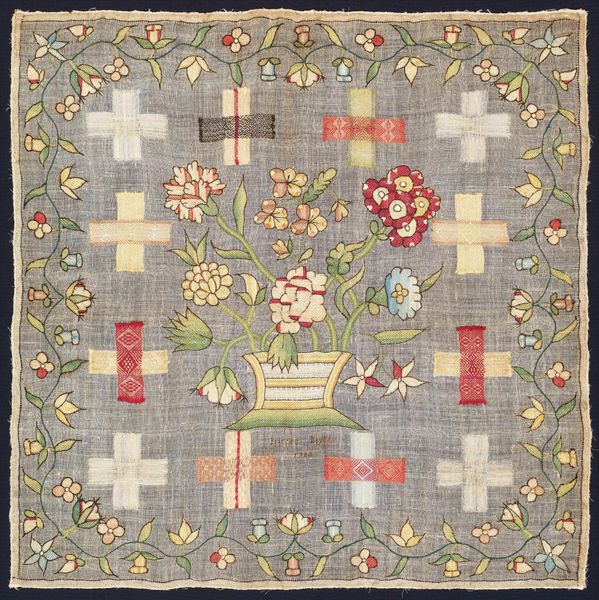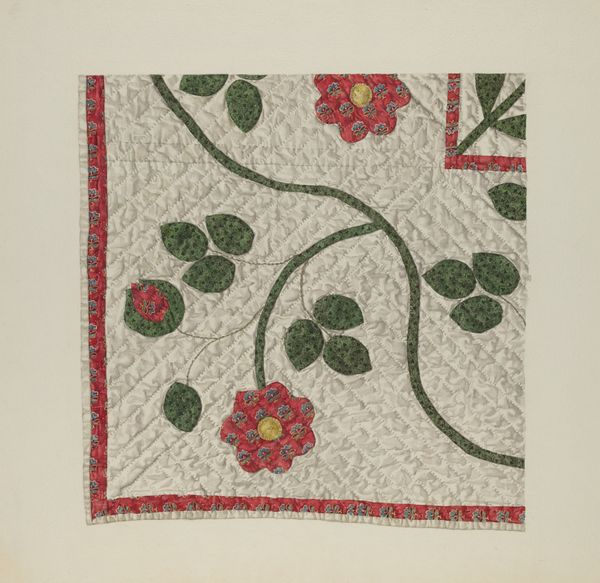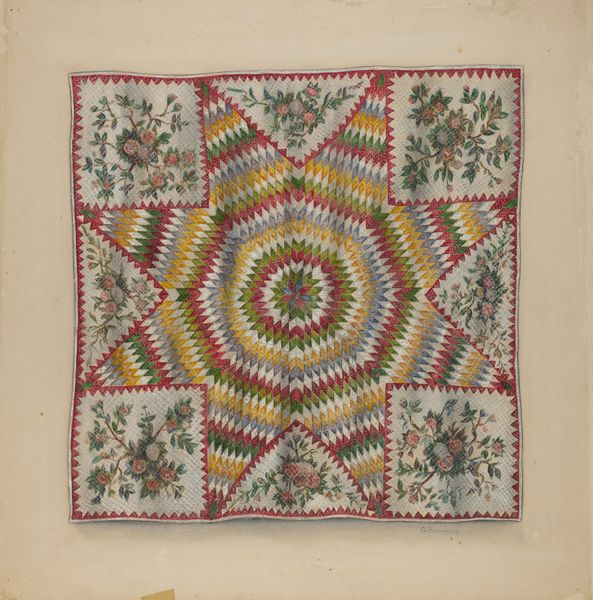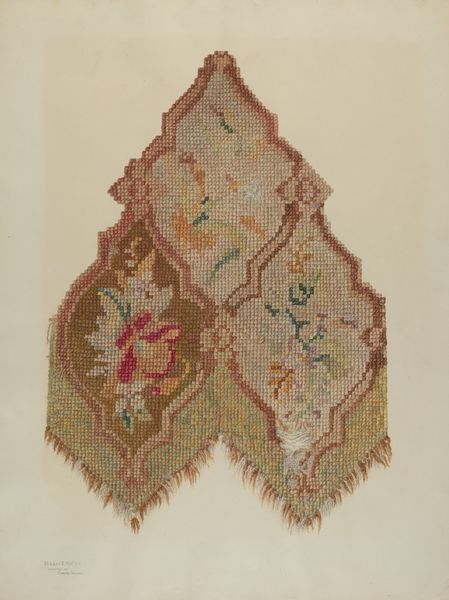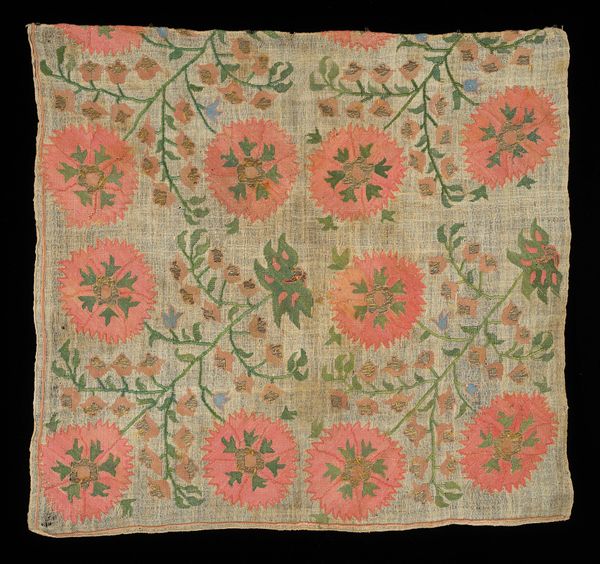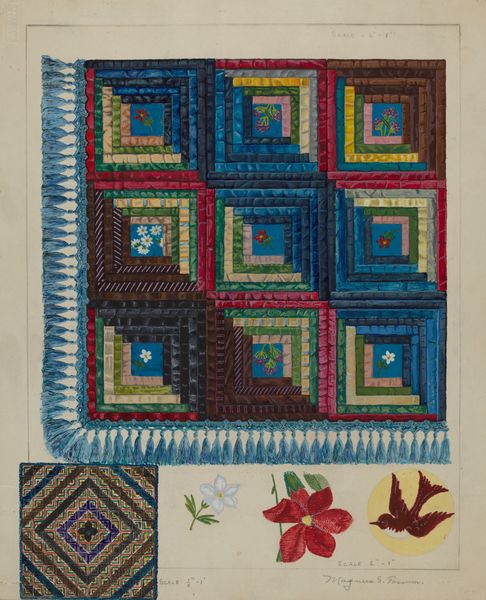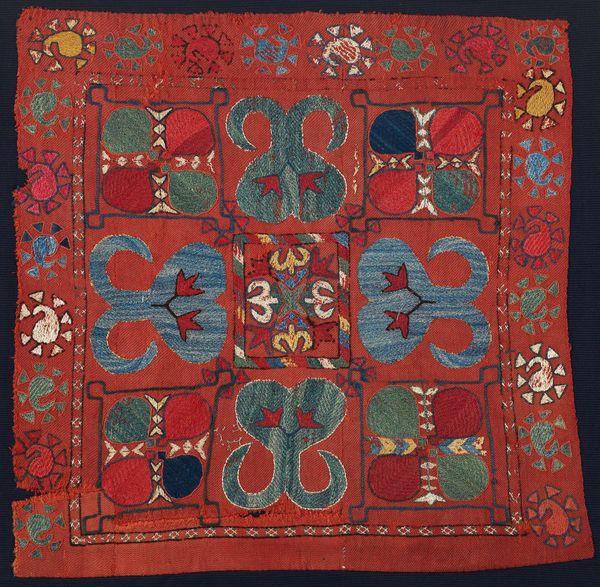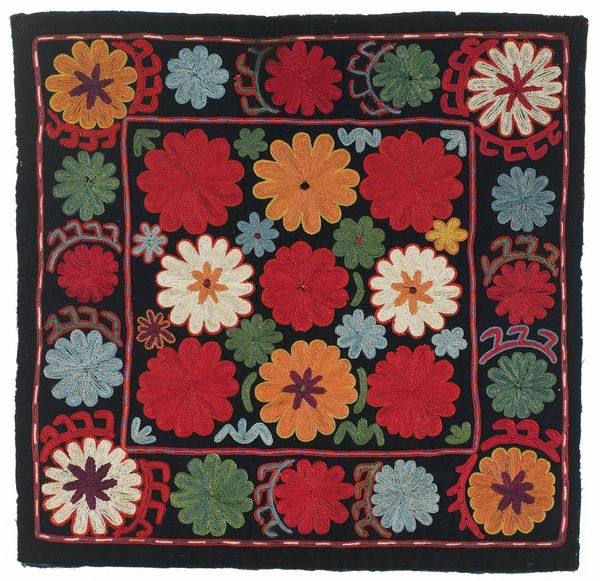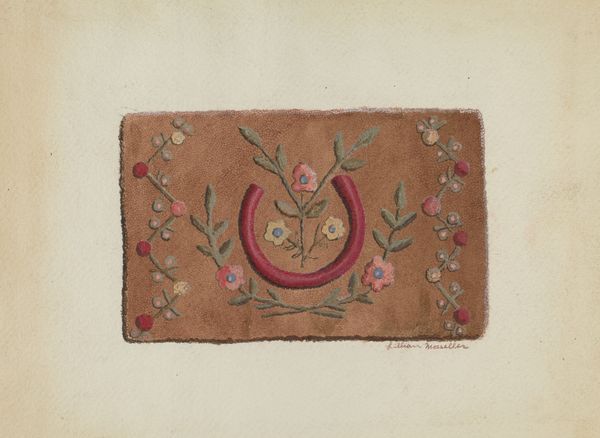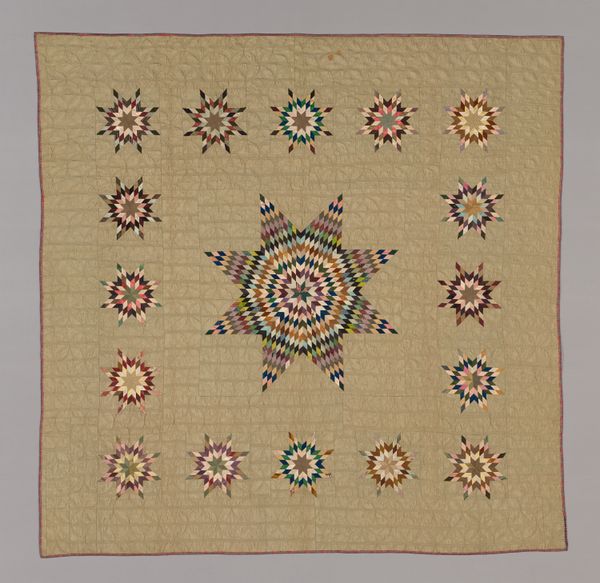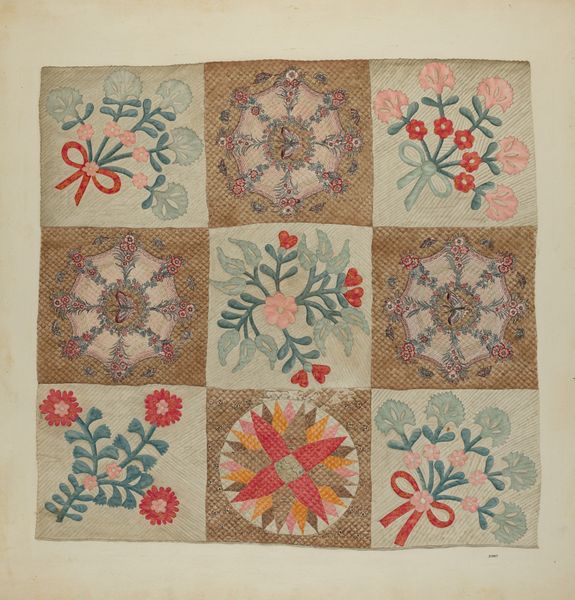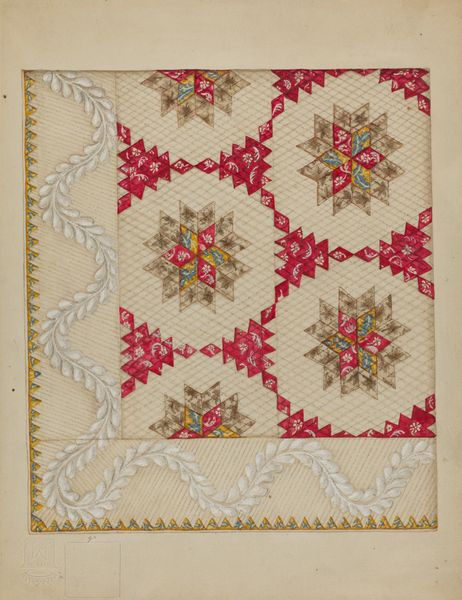
drawing, weaving, textile
#
drawing
#
weaving
#
textile
#
folk-art
Dimensions: overall: 34.5 x 36.7 cm (13 9/16 x 14 7/16 in.) Original IAD Object: 12" high; 12" wide
Copyright: National Gallery of Art: CC0 1.0
Curator: Looking at "Piece of Cross-Stitch" by George Beyer, circa 1937, I'm immediately struck by its homespun charm. The work blends drawing, weaving and textile work into a very personal expression. Editor: I'm struck by how much it embodies a particular kind of domestic craft aesthetic. The somewhat muted tones, the floral motif framed by that repetitive geometric border—there's something very familiar and maybe even a little unsettling in its quaintness. Curator: Unsettling? Tell me more! For me, it evokes warmth, like finding a forgotten treasure in a dusty attic, perhaps. It has such an intimate scale too, as if Beyer intended it to be held close. Editor: Well, yes, the intimacy is there, but I also wonder about the labor and time invested. Embroidery and needlepoint have historically been relegated to the domestic sphere and undervalued. Consider the context of 1937—were such activities a means of solace, a quiet act of rebellion, or simply fulfilling a social expectation for a person like Beyer? Curator: It makes me think of my grandmother's work... maybe both! There’s a quiet resilience, an understated artistry that speaks volumes precisely because it isn't shouting. It is almost a journal, a document about someone’s world – maybe one stitch, one day, at a time? The imperfections give it life, don't you think? Editor: Absolutely. And let’s consider the symbolism. Flowers, of course, have a rich history, often associated with femininity, nature, and cycles of life. The border with the Greek key pattern perhaps alludes to other forms of ancestral heritage or geometric expressions of place. It might seem "simple" at first glance, but layers unfold with even the briefest inspection. Curator: It truly does. I wonder if Beyer ever imagined anyone analyzing his work like this almost a century later? Hopefully, he would have a chuckle. It reminds us that beauty, and maybe resistance, can be found in the most unexpected places. Editor: Yes, a reminder that even the most seemingly straightforward domestic crafts can be powerful texts, telling complex stories about gender, labor, and the intersection of art and everyday life.
Comments
No comments
Be the first to comment and join the conversation on the ultimate creative platform.

